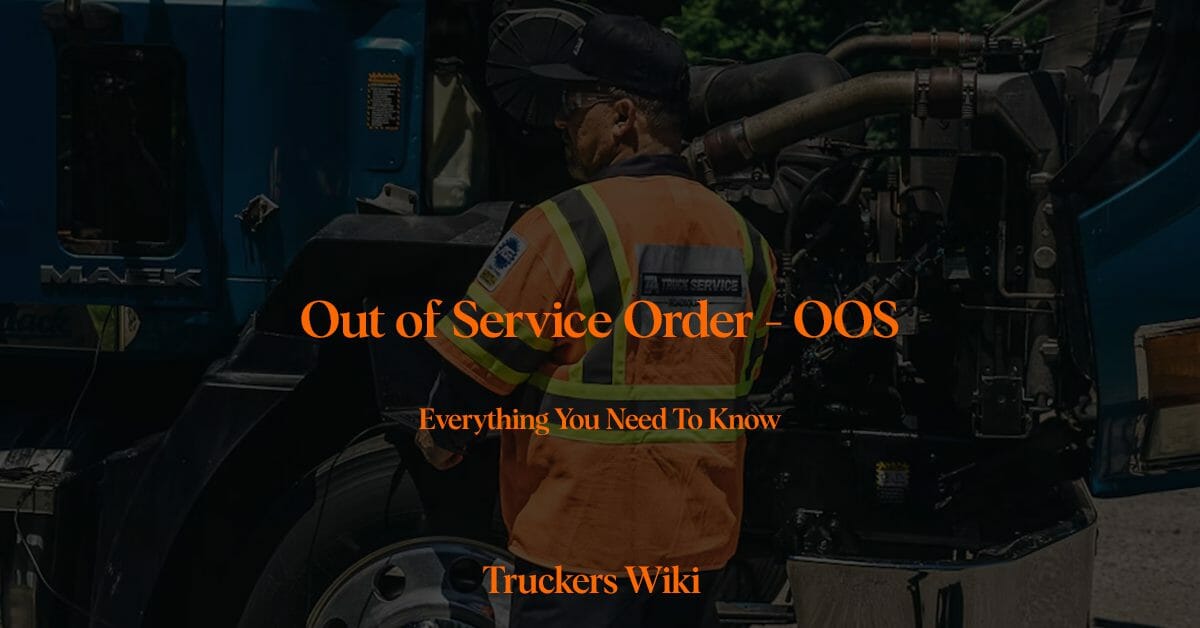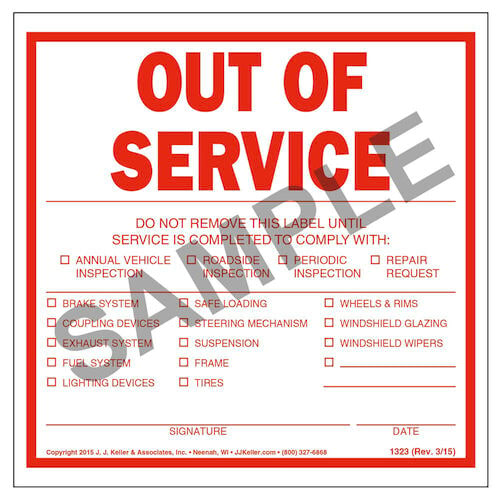
Table of Contents
What is an Out of Service Order in Trucking
An Out of Service order is a directive issued by transportation authorities, temporarily halting the operations of a commercial vehicle, driver, or motor carrier.
This happens when they’re found to be in severe violation of safety regulations, posing a potential threat to public safety.
Reasons for OOS Issuance
There are several reasons an OOS order can be issued:
Vehicle Discrepancies
Brake Failures
Commercial vehicles must maintain effective brake systems. Brake failures or malfunctions, such as air leaks or worn-out brake pads, can lead to an OOS order. Given the size and weight of commercial trucks, functioning brakes are essential to prevent accidents.
Tire Issues
Tires with tread depth below the minimum standard, visible fabric or belt, or improper inflation can result in an OOS order. Damaged or worn-out tires compromise the vehicle’s grip on the road, increasing the risk of accidents.
Lighting Defects
Inoperative or malfunctioning lights, turn signals, and reflectors hinder the visibility of the vehicle to others on the road, making it a potential hazard.
Steering Mechanisms
Defective steering components can make it challenging for the driver to control the vehicle, leading to unpredictable road behaviors.
Driver Violations
Hours of Service Violations
Drivers are limited to a specific number of driving hours to prevent fatigue. Operating beyond these hours is a common reason for OOS orders. Fatigued driving can be as dangerous as driving under the influence.
Lack of Valid Commercial Driver’s License (CDL)
Operating without a valid CDL or with a license that doesn’t match the type of vehicle being driven is a severe violation.
Impairment
Drivers under the influence of alcohol, drugs, or any other substances that can impair judgment are immediately put out of service. This also includes over-the-counter or prescription medications that can cause drowsiness or other impairments.
Medical Disqualifications
Drivers with certain medical conditions or who fail to have a valid medical certificate can be deemed unfit for the road.
Carrier Violations
Improper Records
Carriers must maintain detailed logs of driver hours, vehicle maintenance, and more. Inaccuracies or failure to keep these records can result in an OOS order.
Lack of Adequate Insurance
Carriers are required to have insurance coverage that meets federal standards. Operating without adequate insurance is a significant violation.
Repeated Safety Violations
Carriers with a history of recurrent breaches or those who fail to address previously cited issues can face an OOS order. This is especially true if the carrier shows a pattern of neglecting safety regulations.
Implications of an OOS Order
Once an Out of Service order is issued:
Immediate Cessation
Halting Operations
Once an OOS order is issued, the affected driver, vehicle, or entire carrier operation is immediately barred from continuing any transportation activity. For instance, a truck found with significant mechanical discrepancies at a roadside inspection must remain parked until the issues are rectified.
Delays
Such unexpected halts can result in significant delivery delays. For businesses that rely on timely deliveries, like perishable goods suppliers, these delays can lead to financial losses and damaged client relations.
Financial Impact
Lost Revenue
An OOS order can result in immediate revenue losses. For carriers, a truck not on the move is a truck not earning. If the order affects multiple vehicles or the entire operation, the financial consequences can be severe.
Fines and Penalties
Depending on the severity and nature of the violation, carriers and drivers can face hefty fines. Repeat violations can escalate these fines, and in extreme cases, may lead to legal actions or revocation of licenses.
Increased Operational Costs
Addressing the reasons for the OOS order, be it vehicle repairs, legal consultations, or training sessions, can add unexpected costs to the carrier’s budget.
Reputation Damage
Negative Public Perception
In an age of online reviews and instant news, an OOS order, especially if it stems from a severe violation, can attract negative publicity. Such incidents can shape the public’s perception of a carrier’s commitment to safety.
Business Relations
Clients and partners prefer working with reliable and compliant carriers. Repeated OOS orders can signal unreliability, potentially leading clients to seek services elsewhere.
Insurance Premiums
Carriers with a history of frequent OOS orders or other safety violations may be viewed as high-risk clients by insurance companies. This can lead to increased insurance premiums or even difficulty securing coverage.
Rectifying an OOS Order
Here are the ways of rectifying out-of-service order.
Address Violations
The primary step is to rectify the violations that led to the order.
Re-inspection
A follow-up inspection may be required to ensure compliance.
Documentation
Provide proof that the issues have been addressed to the relevant authorities.
Prevention
The best approach to OOS orders is prevention. Regular vehicle maintenance, thorough driver training, and stringent record-keeping can help carriers stay compliant and avoid facing an Out of Service order.
External Links
Listen to The Article Here
Out of Service Order Example

Audio Article Everything you need to know Out of Service Order - OOS
Last modified: September 21, 2023

